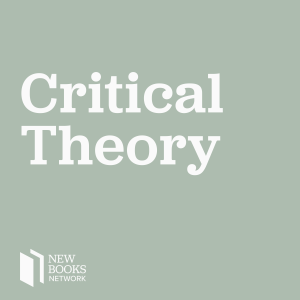
Daniel Wirls, "The Senate: From White Supremacy to Governmental Gridlock" (U Virginia Press, 2021)
 2022-07-14
2022-07-14
Download
Right click and do "save link as"
Daniel Wirls, Professor of Politics at the University of California-Santa Cruz, has a new book that continues his research stream on the United States’ Senate. Wirls’ previous book on the Senate, The Invention of the United States Senate (Johns Hopkins University Press, 2004), written with his brother, Stephen Wirls, explains the historical basis for the Senate, especially in context of the broader American constitutional system as established in 1787.
This new book, The Senate: From White Supremacy to Governmental Gridlock (U Virginia Press, 2021), interrogates the general understanding of the U.S. Senate within the constitutional system and the way that we have come to consider the role of the Senate. Wirls explains what he has dubbed “Senate exceptionalism” which is connected to the more expansive notion of American exceptionalism—this is the notion that the U.S. Senate was a unique and special creation within the constitutional system, and that it reflects the greatest ideals of democratic governance. Wirls’ analysis might suggest otherwise, since the book explores the structure of the Senate and how it actually undermines the democratic conception of “one person=one vote.” The idea of the Senate, and its role in preventing the tyranny of the majority—one of the goals ascribed to the new system established in 1787—is more problematic than the violation of democratic norms.
One of the fascinating threads woven through The Senate: From White Supremacy to Governmental Gridlock is the concept of the Senate and how this concept has become embedded in our understanding of the role of this half of the U.S. Congress. Wirls’ argument with regard to Senate exceptionalism is connected to the narrative about the Senate itself, as the “world’s greatest deliberative body” when it sits in a murky position between the states and the people within the federal system. Senators understand, some of the time, that they represent the people of their respective states, but in so doing, they represent those voters in a dramatic violation of the notion of equal representation, since the states themselves have vastly different population totals and demographics, whereas each state has the same number of U.S. senators. Senators also see themselves, at times, as representing the states as distinct entities. Senators selectively determine if they want to represent the people or the state in different instances. The peculiarity of the filibuster only contributes to the heroic narrative about the Senate, since the filibuster was a creation of the Senate itself (it is not in the Constitution), and the changes in the filibuster and the evolution of those reforms have only made the inequality of representation in the Senate more acute. In a sense, the filibuster or the threat of a filibuster has essentially given a few members of the U.S. Senate a very powerful veto over legislation and reform.
Lilly J. Goren is a professor of political science at Carroll University in Waukesha, WI. She is co-editor of the award winning book, Women and the White House: Gender, Popular Culture, and Presidential Politics (University Press of Kentucky, 2012), as well as co-editor of Mad Men and Politics: Nostalgia and the Remaking of Modern America (Bloomsbury Academic, 2015). Email her comments at lgoren@carrollu.edu or tweet to @gorenlj.
Please use the code 10WIRLS if purchasing the book from the University of Virginia Press for 30% any format of the book until 30 September 2022.
Learn more about your ad choices. Visit megaphone.fm/adchoices
Support our show by becoming a premium member! https://newbooksnetwork.supportingcast.fm/critical-theory
view more
More Episodes
012345678910111213141516171819
Create your
podcast in
minutes
- Full-featured podcast site
- Unlimited storage and bandwidth
- Comprehensive podcast stats
- Distribute to Apple Podcasts, Spotify, and more
- Make money with your podcast
It is Free
- Privacy Policy
- Cookie Policy
- Terms of Use
- Consent Preferences
- Copyright © 2015-2024 Podbean.com





